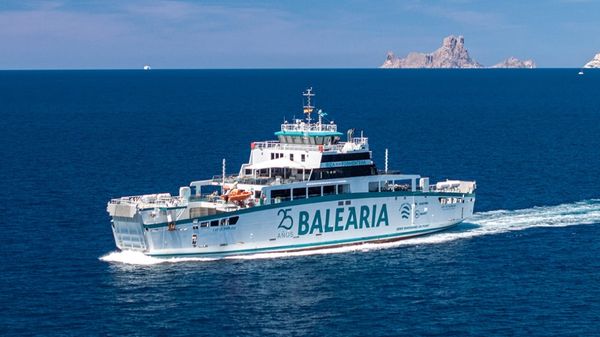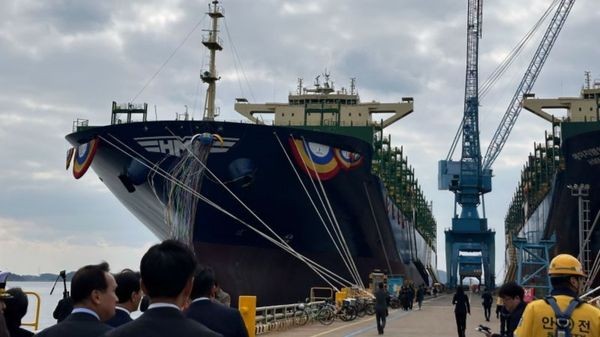

|
Baleària to trial methanol-to-hydrogen system on electric ferry
Spanish operator to test e-methanol reforming technology on Ibiza-Formentera route. |
|
|
|
||

|
HMM names second methanol-powered containership in 9,000 TEU series
South Korean carrier adds HMM Clover to fleet of alternative fuel vessels. |
|
|
|
||

|
Covering the distance to shipping’s nuclear opportunities | ABB
The number of stakeholders engaging with nuclear ship propulsion in 2025 indicates that the maritime industry is eager to expand its options on net zero emissions. |
|
|
|
||

|
Dan-Bunkering appoints Christian Vandvig Finnerup as US managing director
Finnerup transitions from Singapore role to lead American operations. |
|
|
|
||

|
SIPG orders Wärtsilä systems for new LNG bunker vessel
Shanghai International Port Group orders integrated cargo handling and fuel systems from Wärtsilä. |
|
|
|
||

|
Integr8 Fuels signs MOU with Pentarch for bunker services at Port of Edrom
Integr8 Fuels and Pentarch Offshore Solutions have signed an agreement to develop bunker fuel services. |
|
|
|
||

|
MISC orders two LNG dual-fuel Suezmax tankers as part of fleet renewal
Malaysian shipowner expands dual-fuel fleet with newbuilds backed by long-term charters. |
|
|
|
||

|
Oilmar DMCC appoints Eunice Low as marine fuels trader in Singapore
Low joins firm's Singapore trading department with a decade of industry experience. |
|
|
|
||

|
HD Hyundai secures $1.46bn order for eight LNG dual-fuel container ships
South Korean shipbuilder reports highest container ship order volume since 2007 supercycle. |
|
|
|
||

|
Clean Arctic Alliance urges IMO action on black carbon after 'disappointing' COP30
Environmental coalition calls for Arctic shipping fuel regulations ahead of December 5 deadline. |
|
|
|
||